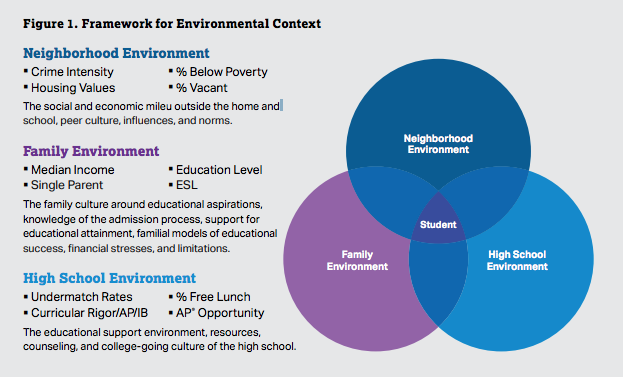College Board announces SAT adversity score plans
The score includes variables such as crime rates and poverty levels
Recently, the College Board announced its plans to assign an Adversity Score to every student who takes the SAT in the hopes of contextualizing scores with socioeconomic standings as well as community environments. Alongside the announcement comes the debate over race and wealth influencing college admissions.
The Adversity Score, part of the College Board’s Environmental Context Dashboard, is measured on a scale from 1-100 using 15 variables, such as crime rates and poverty levels in a community, to assign a score.
While this score would not alter a student’s SAT score, it would allow colleges to see how students compared with peers who have a similar Adversity Score.
For some students such as Gabe Kramer, a junior at Batavia High School, this score threatens to dismantle a system that is potentially already beneficial.
“I think that all students should have their applications measured by merit, not race or socioeconomic standings, as that is the definition of equality,” explained Kramer.
New Trier sophomore Juliana Gurevich echoed aspects of this sentiment.
“Test scores should be objective and this ruins that,” added Gurevich.
In contrast to Gurevich and Kramer, New Trier sophomore Grace Koehler felt that scores would never be objective nor equal with such large underlying disparities.
“It is unfair to measure people with a standardized test without taking into account factors out of their control that could influence their testing or education,” stressed Koehler.
In creating and spreading the application of the Adversity Score to the SAT, College Board’s overarching goal was to more explicitly and statistically factor in the impact that students with less privileged or impoverished educational and socioeconomic lives must endure, according to The New York Times.
Although the SATs may appear unbiased, many studies have actually found them to be directly influenced by socioeconomic standings. The Washington Post reported an almost 400 point difference in average scoring between students from families with an annual income of greater than $200,000 and students from families with an annual income of less than $20,000.
Junior Katherine Figura, notes that taking these factors into account is not a new practice, but is rather simply being standardized.
“Many colleges have a points system where they allot points to a student based on a certain standardized testing score, GPA, extracurriculars, etc. If you’re a minority student or come from a lower financial status, then some schools give you ‘points’ automatically, so this type of recognition was already in place at a later point,” explained Figura.
Lucas Weisman, a senior at Oak Park and River Forest High School, believes that the Adversity Score could offer valuable insight into how these adversities may impact a student’s testing.
“The College Board should use this to measure the fact that certain communities and schools have unequal access to resources than other communities,” said Weisman.
Likewise, Gabriella Perez, a junior at Kennedy High School, views these scores to be a fair measure of adversity accompanying the widening inequalities between schools, including her own.
“Post Secondary Education is not only elitist within itself due to the long history of excluding minority groups, but it’s still heavily inaccessible due to how expensive it is,” explained Perez.
“I think it’s great to prove that it’s not only about race, but also about socioeconomic factors and how colleges can become more accessible to those areas.”
Despite the perspective that the Adversity Score is a step in the right direction, many remain apprehensive of its inclusion of only a specific type of adversity, as well as its quantification of adversity.
As mentioned in a New York Times article, the Adversity Score does not account for the individual hardships of students in the college admissions process.
Similarly, New Trier sophomore Jake Mastrofski cautions that someone’s life can not be filtered down to a number between 1 and 100.
“I believe that while the score could theoretically begin to bridge the gap of inequality, a numerically assigned value does not fully encompass one’s background,” explained Mastrofski.
Other students simply view the Adversity Score to be both an oversimplification of adversity as well as an overstep by the College Board.
NT sophomore Max Leibov feels that, above all else, the College Board should not be involved in determining what constitutes adversity.
“I don’t think that the College Board should have taken it upon themselves to attempt to quantify how hard someone’s life is. There is no way to possibly express that on a 1-100 point scale,” Leibov said.
Sam Shafiro, a sophomore at Oak Park and River Forest High School, explained that although the Adversity Score cannot encompass all adversity, that does not make these scores less valuable.
“People see adversity and think it’s supposed to represent all adversity, when it is actually only a measure of socioeconomic adversity, which I think is very important to factor in. If someone works harder than me to get to my score they should get into a better college than me, that is the definition of merit-based,” emphasized Shafiro.







































